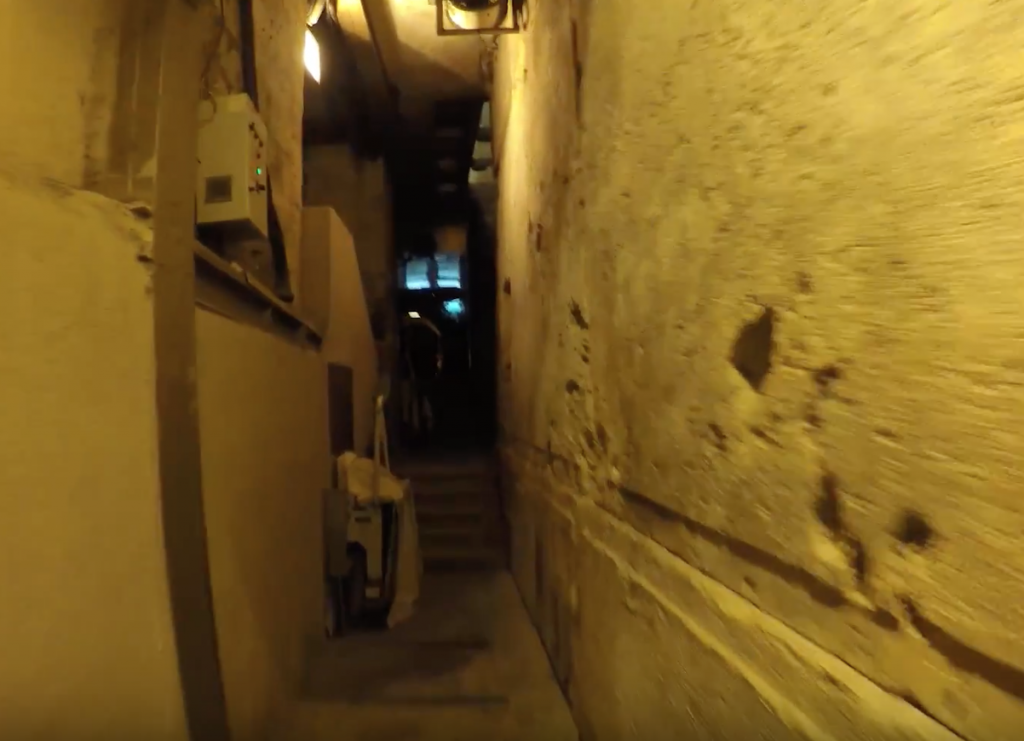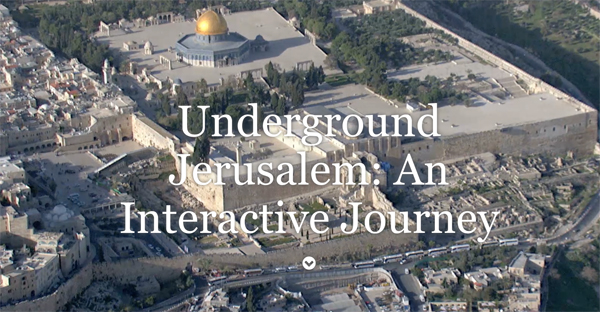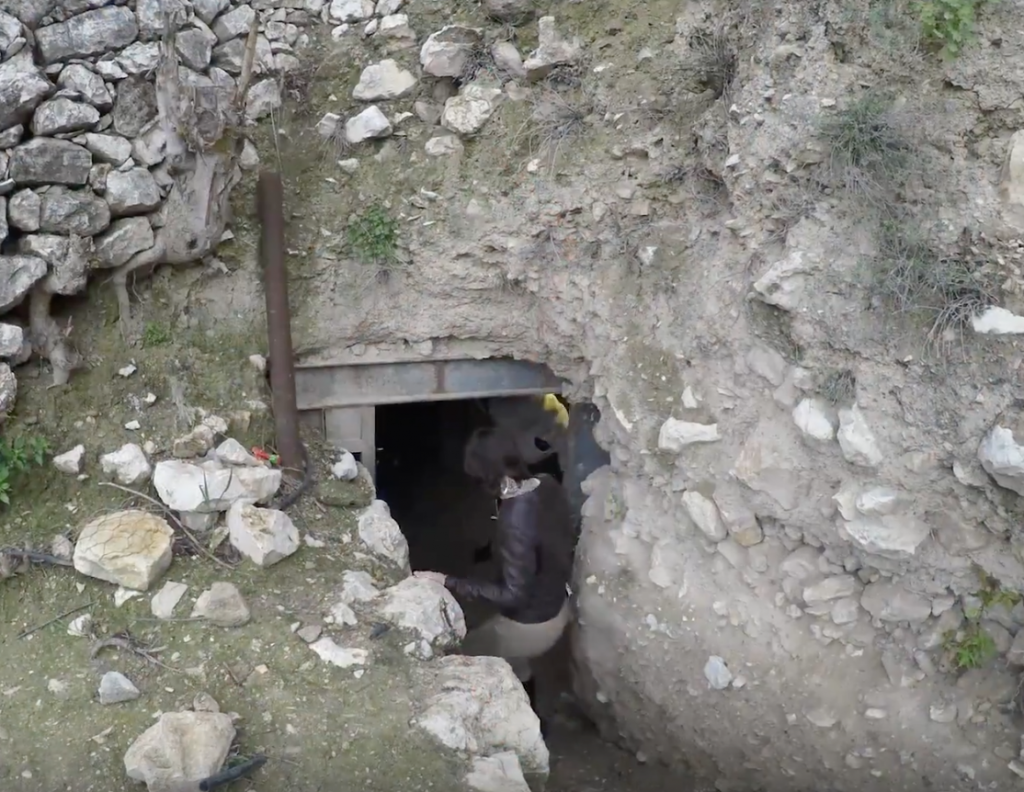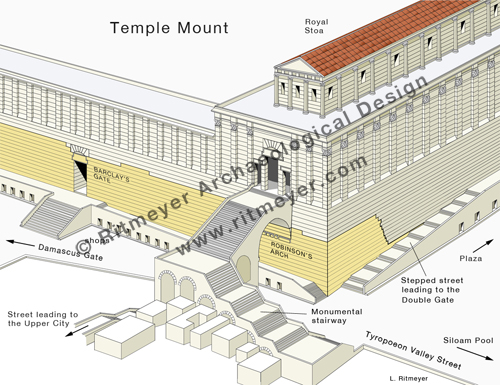Nir Sasson wrote a fascinating article in Haaretz on the underground excavations taking place in Jerusalem.
Jerusalem has vastly expanded in the 7,000 years of its existence. Including, in the past two decades, downwards. Beneath the Old City, one can already walk hundreds of meters underground, pray in subterranean spaces of worship and see shows in subterranean caverns and halls. There are plans in place to dramatically increase this area – essentially, restoring the true ancient city beneath the visible one.
The article is accompanied by excellent plans, photographs and videos to bring you up to speed with what is happening underground. Despite protests from the Palestinians, who deny that the Jews have any historical connection with the Temple Mount, these digs do not penetrate below the Temple Mount.
Magnificent discoveries have been made in the City of David:
Near a 3,000-year-old fortification wall in the park’s center, or in the center of Silwan – depending on whom you ask, we descend underground through an iron door. It leads into a short tunnel that opens up into a series of rooms and halls. Here, in an area still closed to the public, fortification and water systems were discovered, mainly from the Canaanite period, or according to Jewish chronology – prior to the capture of the city by King David. Some have been known to science for over 100 years.
It is possible today to visit the underground remains in the City of David, see the Gihon Spring and walk through Hezekiah’s Tunnel that brings you to the Siloam Pool. From there one can walk underground through an ancient sewer below the Herodian street that leads up to just below Robinson’s Arch in the Temple Mount excavations, aka the Davidson Archeological Park. (see this video: 01_uknima)
A large stretch of the Herodian street had already been excavated above ground by the team of Prof. Benjamin Mazar in the 1970’s along the southern end of the Western Wall. The street that was found below Robinson’s Arch continues north to the Damascus Gate and south to the Siloam Pool in the City of David:
Before Mazar’s excavations, smaller parts of the same street had been excavated lower down in the City of David by Bliss and Dickie in the 1890’s, in the 1930’s by Hamilton and in the 1960’s by Kathleen Kenyon.
In the last couple of years, underground excavations have apparently expanded and uncovered the full width of the Herodian street for a stretch of 120 meters. The original width was 7.50 meters. New tunnels are being dug to connect this street with the Givati parking lot excavations and the new visitor’s centre planned in this area just south of the Dung Gate.
To the north of the Western Wall Plaza one can walk through the Western Wall Tunnel and see the many new areas that have been excavated.  The plan appears to be that in the future all these areas will be linked together, so that a “subterranean City of Jerusalem” can be visited.
The plan appears to be that in the future all these areas will be linked together, so that a “subterranean City of Jerusalem” can be visited.
Not everybody is happy about this development. One protester said:
“A huge excavation project is taking place here, hidden from the public eye, using outdated excavation methods. This is an excavation without boundaries and without any clear category, it’s not a research dig and not a rescue dig, it has no limit of time or place and no professional objectives.”
The excavation methods are not outdated, but these plans are very ambitious and politically controversial. However, once realised, a whole new experience is waiting for tourists to explore this “parallel universe” and enjoy a journey through “Underground Jerusalem”.




I walked through the western wall tunnel for the first time in January. A wonderful experience. Though I have taken a strong interest in Jerusalems archaeology over many years, only a walk-through of these passages provides a proper impression of scale and orientation. I and I suspect many others had not appreciated just how much of the picture is buried beneath ones feet.
The possibility of joining these ‘walks’ together is really exciting.
Dear Dr.Ritmeyer!
I’ve read that a tunnel is found/used obviously beneath the Barcley Gate
http://imemc.org/article/71241/
Has this something to do with the tunnel between the Givati parking lot and the wailing wall or is it a breakthrough to enter the temple mount like 30 years ago at the Warren Gate (Rabbi Getz)?
Thanks from Ben
Ben, haven’t heard of such a tunnel. Looks a hoax to me.
Is there any report on the latrines and sewers on the Temple Mount? Were all the cisterns used for fresh water? Sewers might be the oldest artifacts? How was water moved out of the cisterns? Were they connected together by channels near the surface?
The great crowds at festivals had to go somewhere.
The latrines of today should be near where they always have been.
Stephen,
As far as we know, all cisterns were used for fresh water only. Water was drawn from them using buckets, sometimes attached to a water wheel. Most cistern were filled by rain water that fell on the surface and was channeled into them. We have no information on water closets. They were absent even from the sumptuous palaces that were built in the Upper City of Jerusalem because of lack of running water. The apparent reason was to maintain the sanctity of Jerusalem. If you had to go, the surrounding valleys were the only place to use.
Many thanks. I expected the cisterns were for fresh water. The Temple pavement is a great catchment for the 20″ + winter rains. Drawing millions of gallons with buckets seems impractical. The Essenes had a latrine outside their gate. I would expect for the hundreds of thousands especially at festivals the nearest tree was also impractical. Some way to connect to the sewers seems normal. The great pools could have been used to flush, maintain water flow in the valley streams. What latrines were used 100 years ago on the Dome of the Rock?